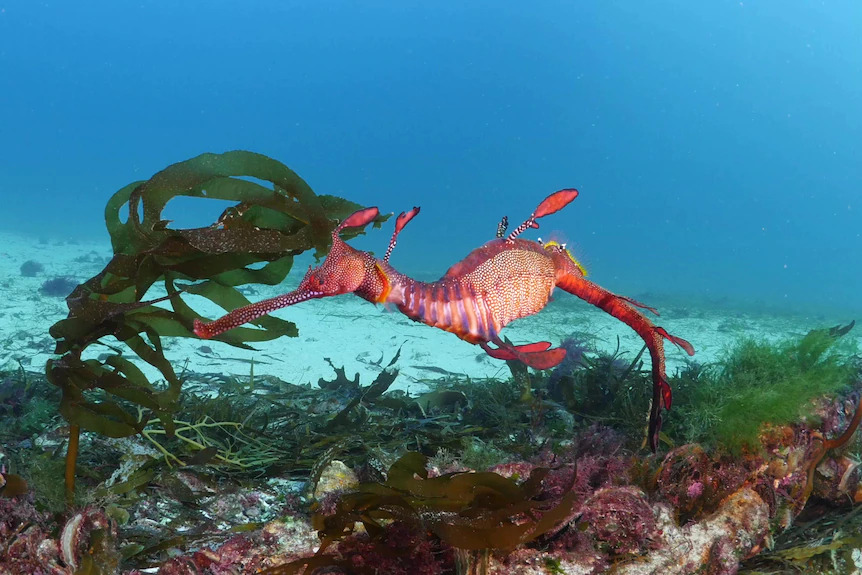At 16 years plus, Speedy is the oldest known sea dragon, facial-recognition project finds
https://www.abc.net.au/news/2023-01-28/ ... /101884442
Diver John Smith has been photographing sea dragons for the best part of two decades.
Every year Mr Smith, 75, clocks up at least 150 dives at Waubs Bay near his home at Bicheno on Tasmania's east coast.
When the weather is good, he heads under water.
"It's a hobby," Mr Smith said.
"I love the underwater photography side of it and it's really good exercise. It's non-load bearing."
For almost 16 years, one of his main diving companions has been a sea dragon called Speedy.
"He's got a bit of a swept-back hairstyle," Mr Smith said.
"His front appendage, on top of his head, is bent back a bit, so it looks like he's travelling at speed."
Speedy is one of four sea dragons residing at Waubs Bay that scientists believe are the longest living of thousands of recorded sea dragons in Australia.
SeaDragonSearch is an initiative by scientists in Western Australia using facial recognition technology to identify and track sea dragons through photographs submitted by recreational divers.
Out of the 3,000 weedy sea dragons being tracked, Speedy is the oldest.
While sea dragons on average are thought to live for eight years, Speedy is estimated to be at least 16 years old, based on Mr Smith's photographs.
Mr Smith admitted he did not know he had actually been swimming with Speedy all of this time.
He said he sent SeaDragonSearch photographs he had taken over the years and they identified Speedy from his early photographs and recent ones.
"When they first told me, I think he was 12 years of age at that stage, and he's still there," Mr Smith said.
"They showed me one of the photos I'd sent in from 16 years ago and he looked a lot younger then, but don't we all."
Longer living than first thought
Sea dragons are found only in the lower half of Australia and there are three species — leafy, weedy and ruby.
Perth scientist Nerida Wilson, who started SeaDragonSearch, said the typical life expectancy of a sea dragon was still unknown.
"It was thought to be six to 10 years, but data from SeadragonSearch shows some individual sea dragons are older than this," Dr Wilson said.
"Current research suggests that Tasmania's sea dragons live much longer than first thought, which may be related to the cooler water temperatures they experience, but we don't know exactly why."
It is thought Tasmanian sea dragons are also much larger than their mainland friends.
Divers hope the SeaDragonSearch will help to uncover more about the species.
Mr Smith said while the facial-recognition technology was great for keep tracking of sea dragons and learning more about them, he could identify some of his local sea dragons by eye.
"You just get to know where they hang out, some of their peculiarities, the way they act — so you get to know them," he said.
"They're got some peculiarities, one for example has three appendages on her neck."
Mr Smith also has names for sea dragons he sees regularly.
"There was one that we called Dot. She had some quite prominent spots on her but I think she's passed on now, I haven't seen her for a long time," he said.
"And there's one we call Lola."
Mr Smith hoped the research would help provide more understanding about the life span and reproduction of sea dragons.

- Speedy the sea dragon is at least 16 years old and resides at Bicheno on Tasmania's east coast.(Supplied: John Smith)
- sea dragon.jpg (171.71 KiB) Viewed 1644 times





